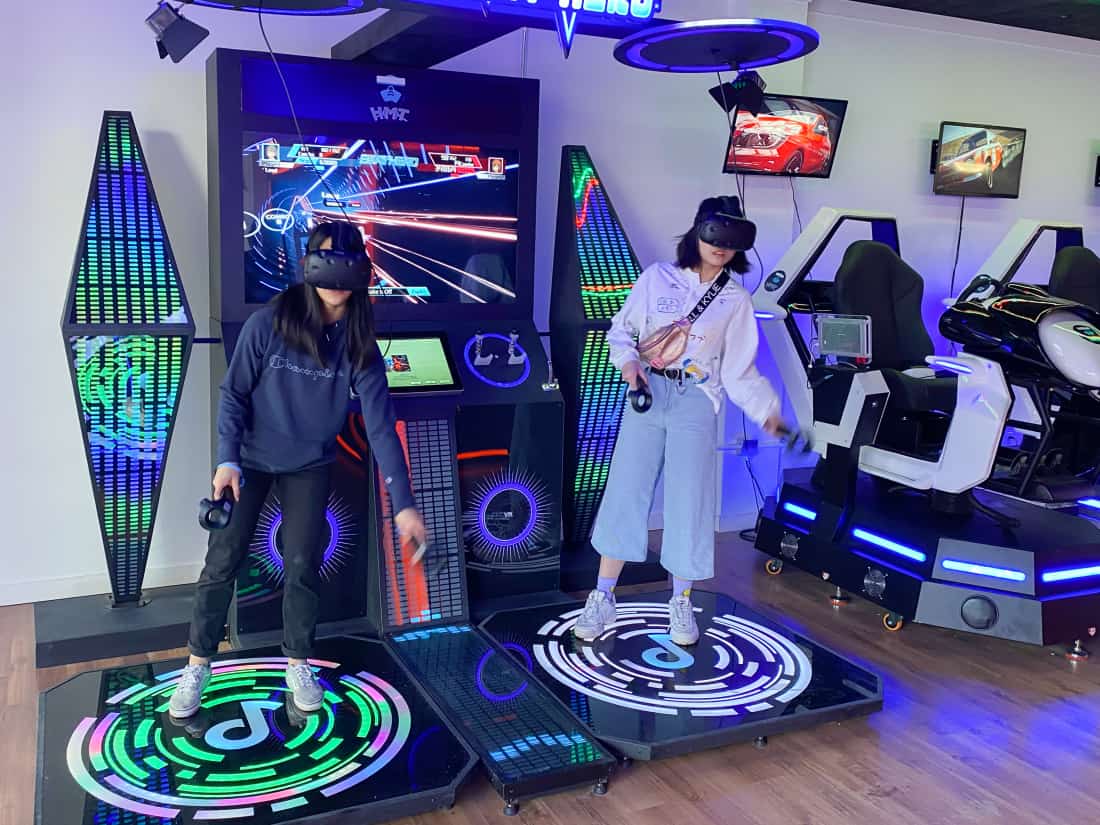
It’s hardly a secret that technology has blasted off in the past 30 years. With each passing day, humanity makes massive innovational strides in fields like medicine, transportation, construction and computing. But it’s not all serious business.
Technological leaps and bounds within the digital entertainment industry are so plentiful you could call the whole shindig a trampoline park. Many remember the Nintendo DS from their childhood, and perhaps even the NES or Sega Genesis, but you’d be hard pressed to find someone who can detail a recent arcade visit.
Despite nostalgia for arcades being alive and strong thanks to the recent ‘80s revival in pop culture — looking at you, Stranger Things — there aren’t many of these facilities left standing to scratch the itch. Upon reflection, it seems similar social settings are somewhat scarce.
With gaming culture more normalized now that we carry supercomputers in our pockets, it isn’t too far a stretch to say the demographic for video game hubs is larger than ever. Finding someone who has never once played Angry Birds, Geometry Dash or Crossy Road is a task even Hercules couldn’t complete.
Accessibility is far from the only attractive trait in modern gaming. Graphics quality and game mechanics are pushed further routinely, and the consoles themselves have more bells and whistles than a train engine.
From detachable controllers to being able to virtually take you to another planet entirely, there’s something anyone can get behind. Who wouldn’t want to escape reality with only a headset, even for only a few minutes?
Now, something as high-tech as instant teleportation through a pair of goggles sounds ridiculous. This may be true but it’s also entirely real, and it may be what replaces those retro hangout spots. I sat down with Levi Trinh, representing his family’s business HMT Entertainment, to get the scoop on virtual reality game centres.
HMT opened the doors of their futuresque establishment on Broadway Avenue to the eager public on Jan. 4. This milestone is, of course, significant for their business, but equally significant to Saskatoon, as they are the very first of their kind to open up an all VR arcade here. Trinh stated that they are “very excited to bring something new to the city.”
Virtual reality as a form of entertainment is still quite new. The first notable use of the technology was for medical and flight simulation training, after which the technology crept its way into commercial entertainment through the ‘90s. It truly exploded in popularity when headsets like the Oculus Rift, HTC Vive and PlayStation VR were developed commercially and released at affordable prices only in the past decade.
Despite how new this area of technology is, the amount of games and mind-blowing features packed into the consoles is quite remarkable. At HMT, a plethora of such games are found, like a motorbike that moves with the vehicle you drive in-game.
Perhaps the most impressive showcase is found directly in the centre of the room, which Trinh described as the feature he’s proudest of. A group of up to four players step into a massive cage and are transported into a post-apocalyptic landscape.
They must work together through a horror environment as long as they can. “I haven’t seen this anywhere else in the world,” he explained. “[It’s a] breakthrough of technology of bringing teamwork to VR.”
The most exciting aspect to VR technology lies combined within its newness and its nature of piquing the curiosity of nearly everyone. The room to innovate on this technology is one without walls.
Trinh even mentioned the possibility of creating a five-versus-five arena in the style of popular team shooter games. In an age of revival for social health to combat the physical isolation technology can bring, something as wondrous as a VR arcade could be just the wedding we need between ground-breaking entertainment technology and welcoming social spaces.
—
Gavin Robertson
Photo: Tomilola Ojo/ Culture Editor